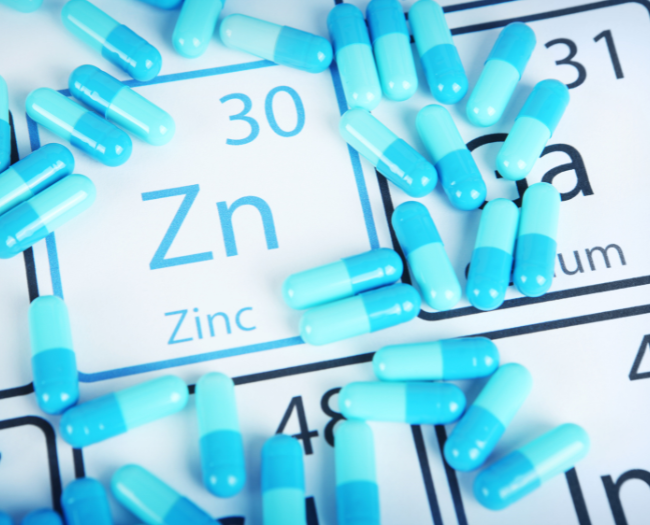Stunted children often have chronic malnutrition, leading to poor posture and other diseases, including lowered immunity and intellect. Stunting prevalence is influenced by several variables, one of which is zinc concentration. Growth hormone (GH) is activated and synthesized when zinc is present. Hence, children with zinc deficiencies damage GH receptors and have resistive GH synthesis.
A deficiency in zinc might result in stunted development and lowered immunity since zinc is a necessary mineral crucial for enzymatic reactions, gene function, and cell stability.
Toddlers’ development and growth are influenced by growth hormones, which are activated and begin to synthesize when zinc is present.
What can cause stunted growth

The causes of stunting and childhood malnutrition are pretty comparable. Stunting often occurs between 1000 days between conception and the second year of life. Poor feeding practices, insufficient nutrition for pregnant women, and poor sanitation are the three leading causes of stunted growth. Other contributing factors include:
- a record of slow or stunted development in the family
- lacks growth hormone
All of these components are modifiable, but how exactly? A growing embryo needs its mother’s nourishment to power development as life starts in the womb, and nursing maintains this dependence after delivery. The fetus’s growth is constrained by inadequate maternal nutrition. The chance of infant mortality during the first 1000 days is subsequently increased by poor fetal development. The mother’s health has a direct impact on the likelihood of stunting. If the mother has influenza, intestinal worms, HIV, or AIDS, the risk of stunting for the child rises.
Pregnancy difficulties for women with hypertension may include higher birth weight and premature delivery. The mother, who is still developing, and her fetus compete for nutrition when a woman becomes pregnant during adolescence. Close pregnancies can deplete a mother’s stores of nutrients, starting a chain reaction of poor health that affects the child’s future.

- being underweight at birth
- stunted in infancy
- teenage pregnancy
- overworked throughout pregnancy
- low birth weight infants
- inadequate ability to breastfeed
Can zinc deficiency cause stunted growth

Children are especially susceptible to zinc deficiency since their needs are higher during times of fast development. A deficiency in zinc might result in stunted children’s growth and affect their ability to thrive. FTT and decreased appetite in newborns and kids have a zinc deficiency. According to reports, foods rich in phytic acid and zinc-deficient diets are the significant causes of zinc shortages because they prevent zinc from being absorbed.
FTT, anorexia, male hypothyroidism in teens, mental sluggishness, skin conditions, the poor healing process, immunological dysfunctions, and aberrant neurosensory alterations are only signs of zinc deficiency. In particular, zinc deficiency in pregnant women may cause delayed cell development and unfavorable pregnancy outcomes for both the mother and the child. On average, children aged 3-5 years consumed 75.7 percent of the recommended daily zinc intake, and there was a good correlation between blood zinc levels and kids’ weight and height. Therefore, FTT may result from a low zinc intake.
Children and adults with normal development have been included in prior research on the nutrient intake of zinc.
What are the signs of stunted growth

Children with stunting have reduced growth and development due to poor nutrition, recurrent infections, and insufficient psychological stimulation. If a kid’s height for their age is much more than 2 standard deviations below the WHO Child Growth Standards median, they are considered stunted.
Early-life stunting, especially within the first 1000 days from birth to the age of 2, causes delayed growth and has adverse functional effects on the kid. A few of these effects include:
- poor mental acuity
- inadequate academic performance
- efficiency declines
- elevated risk of chronic illnesses linked to diet in adults
Given its associations with mortality and morbidity probability, non-communicable illnesses in later years, learning ability, and profitability, linear development in early infancy is a powerful indicator of healthy development. It is also directly related to how children grow in their cognitive, linguistic, and sensory-motor abilities, among other areas.

They may also exhibit the following signs based on the underlying reason for their stunted growth:
- Their limbs or legs could be too big or too small for their torso if they have specific types of dwarfism.
- If their thyroxine levels are low, they may have a lack of energy, diarrhea, dry skin and hair, and difficulties keeping warm.
- Insufficient growth hormone (GH) can hinder facial development, making them look younger.
- Diarrhea, vomiting, nausea, bleeding in the stool, or decreased growth due to a stomach or intestine issue are all possible symptoms.
Which vitamin helps in growth

Children between the ages of 3.7 and 16.2 were said to secrete more growth hormone when given zinc (50 mg/day for two months). Additionally, children with poor BMI benefited more from zinc intake than those with a healthy BMI. As a result, the benefits of zinc vitamins varied according to the traits of children with FTT. HAZ, as opposed to WAZ, is recognized as a sign of ongoing malnutrition. Since catch-up development in height takes longer than in weight, dietary support must be continuously provided until HAZ achieves its average level. Researchers have found that compared to the underweight group, the group with stunting benefited less from zinc supplements. Nevertheless, depending on the severity of FTT, it could be essential to carry out a long-term trial with various zinc supplementation dosages.
Zinc, the body’s second-most abundant nutrient, is essential for bone formation, neurodevelopment, DNA synthesis, cellular membrane flexibility, and wound repair. It helps physical growth. Since zinc isn’t stored, a continuous intake is needed. Serum zinc levels should be 70-120 ng/dL. Zinc homeostasis is well-maintained. Even a severe zinc deficit doesn’t influence blood zinc levels. Even if blood zinc levels are normal, a shortage might limit growth.
Therefore, to avoid long-term zinc shortage, it is crucial to identify growth retardation and zinc deficiency early using a variety of indications and to provide zinc supplementation at the proper time.
Conclusion
Zinc deficiency can cause stunted growth and other difficulties due to its importance in numerous processes. Lack of zinc causes blindness, increased infection rates, delayed male sexual development, stunted growth, hunger, weight loss, skin problems, and anemia. Zinc is crucial for kids’ growth.
Severe zinc deficiency may be harmful to developing children’s health and wellbeing. If your kid shows delayed or stunted development, recurrent infections, decreased appetite, and losing weight, you should seek immediate medical attention. These symptoms might also indicate other dangerous illnesses needing medical treatment.
Read the following to learn everything you need to know about chelated zinc, including the applications for it and the benefits it offers: Chelated Zinc: What You Need To Know Uses, Benefits

